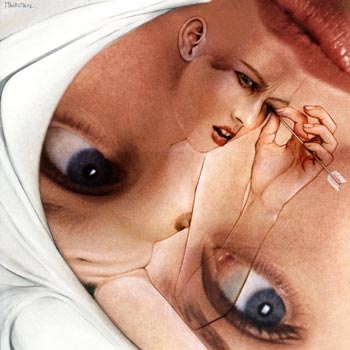 |
Surimage Painting
translated from the french |
The current world is full with images, it is obvious.
It is attractive to take to task this landscape of images determined and to make of it the base of an art which transforms and shows the transformation into work.
As the work which uses materials to produce a new object. |
In practice, one will choose one or the other existing image of our time when publicity occupies the minds,
and all the genie will consist in generating another image which keeps in it the share of its origin.
As each single individual carries the gene share of his parents which it inherits a certain resemblance. |
The recovered image is initially detached from its advertising context by recovery of painting or cutting and reframing in another format.
Then there new image appears by shade off (estompage) the printed paper or by the application of painting, lightening of printed inks or addition of painted surfaces.
Like light and obscure, graphics or the color formerly modulated the white canvas or the wall with fresco. |
The majority of the images thus worked result from commercial publicity, because the current proliferation of these images works itself the public.
In answer, dialectical art has the intention of reappropriate back these images and this public.
It will thus seek to modify the particular relation of the human, alienated to the commercial message, by reintroducing the forgotten human reality.
As the old work of art which was devoted to the lords celestial or terrestrial of the feudal time. |
The original image is recycled or recovered, recut or recomposed, improved or repainted, covered or altered, recreated or reinvented to become gradually an art work.
In this manner, the work of art surimage manifestes (shows) the possible character of change in the cultural sphere.
Like it expresses there the universal character of the necessary change in all the other human spheres of activity. |
| Michel Wauthoz © 2000. |
| SURIMAGE
|
Surimages
|
in french
|